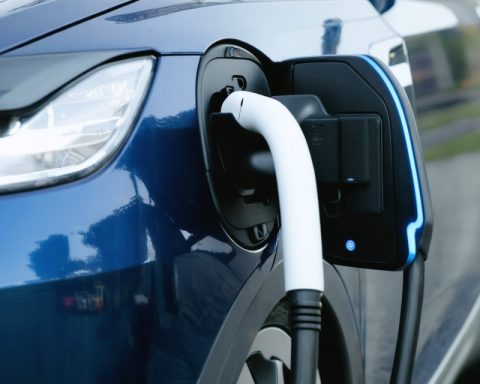- Electric vehicles (EVs) offer an eco-friendly alternative to traditional cars, reducing carbon footprints and noise pollution.
- EV charging resembles charging a smartphone, offering three levels:
- Level 1: Uses a standard outlet, providing 3-5 miles of range per hour; ideal for overnight charging at home.
- Level 2: Requires a 240-volt outlet, commonly found in public and residential areas, adding 10-20 miles per hour.
- DC Fast Charging: Offers up to 80% charge in 30 minutes, catering to quick stop needs.
- Infrastructure for charging stations is rapidly expanding, with locations at grocery stores, parking garages, and highway rests.
- Smart technology assists in finding and using stations with ease, using apps for navigation and payments.
- Long-term cost and maintenance savings make EVs a financially attractive option despite higher upfront costs.
In the bustling streets where innovation meets daily life, the quiet hum of electric vehicles (EVs) signals a shift towards a cleaner, greener future. Yet, for many, the mystery of EV charging lingers. Unraveling this enigma not only opens the door to an eco-friendlier lifestyle but also ensures you’re on the cutting edge of technology.
Imagine cruising through serene suburban avenues or thriving urban chaos, knowing you contribute to reducing carbon footprints. But as you glide effortlessly in your electric escape, the thought of recharging your vehicle often sparks questions. Many wonder: how difficult is it to charge? Where do you find charging stations? How long does it actually take?
Charging an EV feels more like charging a smartphone than fueling a traditional car. There are three main levels of charging: Level 1, Level 2, and DC Fast Charging.
– Level 1 charging uses a standard household outlet and adds about 3-5 miles of range per hour. Perfect for those all-night at-home charges.
– Level 2 chargers, often found in public spaces and residential areas, require a 240-volt source and significantly cut down charging time, adding about 10-20 miles of range per hour.
– DC Fast Chargers take efficiency to a new level, providing up to 80% charge in just 30 minutes.
The placement of charging stations evolves rapidly as cities and private companies race to build infrastructure. Think of EV charging stations popping up at grocery stores, parking garages, and highway rest stops. It’s a strategic chess game, placing convenience at every driver’s fingertips.
Furthermore, smart technology takes charging into the future. Apps guide drivers to the nearest station, check availability in real-time, and even process payments, ensuring a seamless experience without the guesswork.
Electric vehicle enthusiasts often tout the cost savings as another perk of charging over fueling. While the initial investment in an EV may seem steep, the long-term savings on fuel costs and maintenance offer a compelling argument for making the switch.
So, what’s the takeaway? As the tendrils of electricity weave deeper into the fabric of transportation, embracing this change could mean less noise, fresher air, and substantial savings. Whether you’re a seasoned EV owner or someone considering the leap, understanding the essence of EV charging demystifies the journey.
In a world looking towards sustainable solutions, EV charging stands as a beacon of possibilities, inviting you to jump on the electric bandwagon and propel yourself into the future with confidence. Ready to plug in and power up? Only you can decide — the road ahead is electric.
Unlock the Secrets of EV Charging: What You Need to Know Today!
Understanding EV Charging: A Modern Driver’s Guide
In the bustling streets where innovation meets daily life, the quiet hum of electric vehicles (EVs) signals a shift towards a cleaner, greener future. Yet, for many, the mystery of EV charging lingers. Unraveling this enigma not only opens the door to an eco-friendlier lifestyle but also ensures you’re on the cutting edge of technology.
Imagine cruising through serene suburban avenues or thriving urban chaos, knowing you contribute to reducing carbon footprints. As you glide effortlessly in your electric vehicle, the thought of recharging often sparks questions: How difficult is it to charge? Where do you find charging stations? How long does it actually take?
EV Charging Levels: A Breakdown
Charging an EV feels more like charging a smartphone than refueling a traditional car. There are three main levels of charging: Level 1, Level 2, and DC Fast Charging.
– Level 1 Charging: This uses a standard household outlet, adding about 3-5 miles of range per hour. It’s perfect for overnight at-home charging.
– Level 2 Charging: Found in public spaces and residential areas with a 240-volt source, Level 2 chargers significantly cut down charging time, adding about 10-20 miles of range per hour. Installing a Level 2 charger at home offers convenience for regular charging.
– DC Fast Charging: This takes efficiency to a new level, providing up to 80% charge in just 30 minutes. It’s ideal for long-distance travel and quick top-ups.
Infrastructure & Smart Technology
The placement of charging stations is evolving rapidly as cities and private companies race to build infrastructure. Charging stations are popping up at grocery stores, parking garages, and highway rest stops, creating strategic convenience at every driver’s fingertips.
Smart technology plays a vital role in modern EV charging. Apps guide drivers to the nearest station, check availability in real-time, and process payments, ensuring a seamless and hassle-free experience.
Cost Savings & Environmental Impact
Electric vehicle enthusiasts often tout the cost savings as another perk of charging over fueling. While the initial investment in an EV may seem steep, the long-term savings on fuel costs and maintenance make a compelling argument for making the switch. According to the U.S. Department of Energy, EV owners often spend about half as much on fueling their vehicles compared to gasoline-powered cars.
How-To Steps & Life Hacks for Efficient EV Charging
1. Plan Your Charging: Use apps to locate and reserve charging stations during peak travel times.
2. Install a Home Charger: If possible, install a Level 2 charger at home for optimal convenience and overnight charging.
3. Monitor Energy Usage: Keep track of your vehicle’s energy consumption and adjust charging habits to optimize efficiency.
Future Trends & Predictions
With the increasing adoption of EVs, expect innovations such as wireless charging and solar-powered stations. The EV market is forecasted to expand significantly, with manufacturers like Tesla, Ford, and GM leading the charge.
Pros & Cons Overview
Pros:
– Reduced carbon footprint
– Lower operating costs
– Growing infrastructure
Cons:
– Initial purchase cost
– Limited range for some models
– Dependence on charging infrastructure
Conclusion: Actionable Tips
Whether you’re a seasoned EV owner or considering the leap, understanding the essence of EV charging demystifies the journey. Here are some quick tips to get started:
– Research & Plan: Know your daily travel needs and charging options available in your area.
– Invest in Smart Technology: Use apps for efficient planning and cost savings.
– Stay Informed: Keep up with the latest industry trends and innovations.
For more insights into the world of electric vehicles, visit Tesla or Ford to explore the latest offerings and advancements in EV technology.













